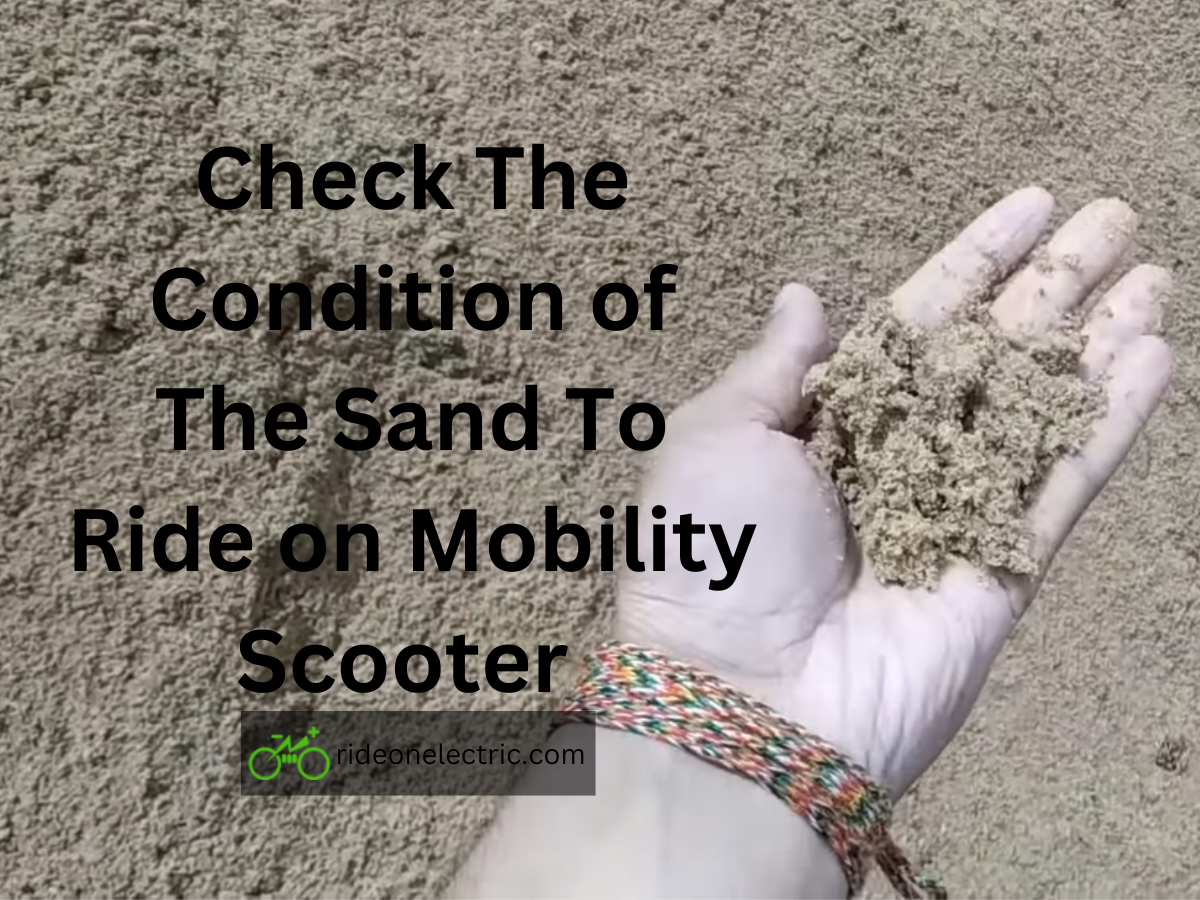Mobility scooters are a convenient and practical solution for people with mobility issues, but can mobility scooters go on sand? While cruising on a mobility scooter on the sand may seem like a dream come true, a few challenges must be considered.
Sand can be challenging to navigate on and can cause damage to the scooter if not appropriately handled. However, with the right mobility scooter and some helpful tips, you can safely and comfortably enjoy the beach on a mobility scooter.
In this article, I will explore the various factors that determine whether a mobility scooter can be ridden on the sand, including the type of scooter, the conditions of the sand, and the rider’s abilities.
Types of Mobility Scooters
Not all mobility scooters are designed to be ridden on the sand. There are several different types of scooters, each with capabilities and limitations.
Ride-on Mobility Scooters
Ride-on mobility scooters, also known as pavement scooters, are designed for use on paved surfaces such as sidewalks, roads, and bike paths. They typically have small wheels and low ground clearance, making them less suitable for sandy terrain.

Off-Road Mobility Scooters
Off road mobility scooters, also known as all-terrain scooters, are designed explicitly on rough or uneven surfaces such as grass, gravel, and sand. These scooters have larger wheels and higher ground clearance, which allows them to navigate the sandy terrain more easily.
Beach Mobility Scooters
Mobility scooters for the beach are, also known as amphibious scooters, are specially designed for use on both land and water. They typically have large, low-pressure tires that can float on water, allowing the scooter to be used on the beach and in the water.

Water-Proof Mobility Scooter
Finally, when using a mobility scooter on the beach, there is the possibility of getting wet. While some mobility scooters are designed to be used on land and water, not all are waterproof.
If you’re planning on using your mobility scooter on the beach, it’s essential to ensure its waterproof or at least water-resistant. It will help protect the scooter’s electronics and moving parts from water damage.

Riding Tips of Mobility Scooters In Sand
Riding a mobility scooter on the beach can be a fun and enjoyable experience but following some basic safety guidelines is essential to ensure a safe and enjoyable ride. Here are some tips for riding mobility scooters on the beach:

- Choose the Right Scooter: Not all mobility scooters are suitable for use on the beach. You to choose a scooter explicitly designed for beach use, with larger wheels for stability on soft sand.
- Check the Weather: Weather conditions can change quickly on the beach, so it’s essential to check the forecast and avoid riding in adverse conditions such as high winds, rain, or storms.
- Stick to the Hard-Packed Areas: Soft, deep sand can be challenging to navigate, so it’s best to stick to the hard-packed areas near the water’s edge.
- Wear Protective Gear: You to wear protective gear, such as sunscreen and a hat, to protect yourself from the sun.
- Check the Tide: The tide can come in quickly on the beach, so you must be aware of the tide schedule and avoid riding in areas where the wave may submerge.
- Be Aware of Others: You should be aware of other beachgoers and ride at a safe speed and distance when riding on the beach.
- Keep Your Scooter Clean: Sand can accumulate in the moving parts of your scooter, so cleaning it thoroughly after each use is necessary to protect it from damage.
- Take Regular Breaks: Riding a mobility scooter on the beach can be tiring, so taking regular breaks to rest and stay hydrated is essential. By following these tips, you can enjoy a safe and enjoyable ride on mobility scooter in the sand on the beach.
Remember always to use your mobility scooter per the manufacturer’s instructions and to consider your abilities, the condition of the beach, and the weather before riding.
Conditions of the Sand
Even if you have an off-road mobility scooter, the conditions of the sand can significantly affect whether the scooter can be ridden on it. If the sand is dry, compact, and hard-packed, it may be possible to ride the scooter. However, if the sand is loose, deep, and soft, it can be much more challenging to navigate and may even damage the scooter.

In addition, the slope of the sand can also affect whether a mobility scooter can be ridden on it. If the sand is sloped, it can be challenging to maintain control of the scooter and prevent it from tipping over.
Rider’s Abilities
Even if you have an off-road mobility scooter and the conditions of the sand are favorable, the rider’s abilities can significantly affect whether the scooter can be ridden on it.
If the rider has good balance and upper body strength, they may be able to navigate the sandy terrain more easily. However, riding the scooter on the sand may be more difficult if the rider has limited mobility or balance issues.
Beach Mobility Scooter Rentals
While some people own their mobility scooters, others prefer to rent them for a beach vacation. Beach mobility scooter rentals are becoming more popular as more people look for ways to enjoy the beach despite mobility challenges.
Renting a mobility scooter can be a great way to experience the beach without worrying about the cost or maintenance of owning one. Additionally, rental companies usually have a variety of mobility scooters available, including beach and off-road, so that you can choose the best one for your needs.
Yes, sand can damage a mobility scooter by clogging the moving parts and causing wear and tear. Protect your scooter from damage by cleaning it thoroughly after each use.
It depends on the design of your mobility scooter. Some scooters are designed for off-road use, while others are not. If you’re interested in taking your scooter on off-road trails, look for an off-road mobility scooter with larger wheels and a more durable frame.
The speed of a mobility scooter on the beach can vary depending on the scooter’s design and the beach’s condition. Beach mobility scooters typically have a top speed of around 4-6 mph.




